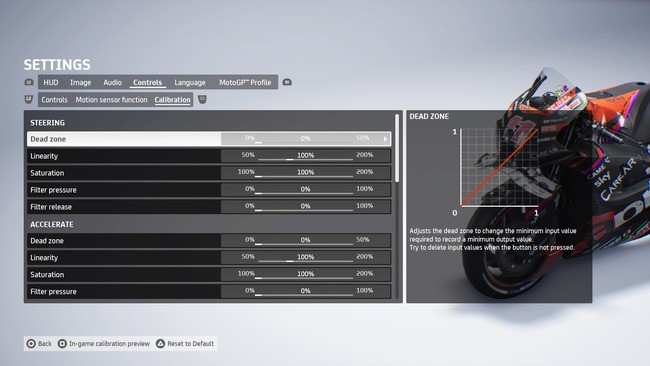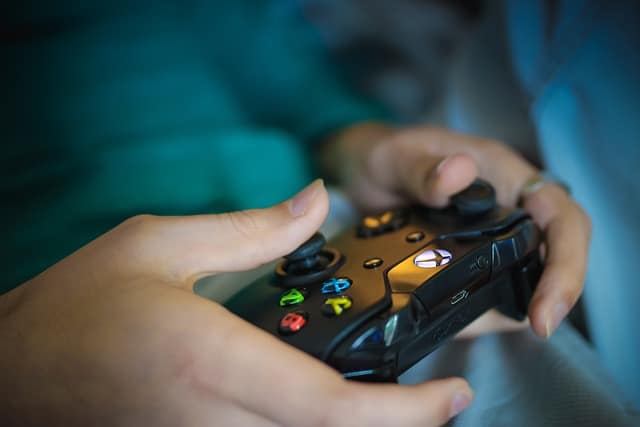It’s fair to say that although it takes some getting used to, the handling on MotoGP 23 is somewhat easier than it’s predecessor MotoGP 22. You can brake later and it’s easier to make corners without over-running them.
But the braking physics on ’23 is still no walk in the park, and this year it’s harder to brake and lean at the same time, especially going into downhill braking zones. If you over-apply the brakes, it’s very easy to lose control and fall off the bike.
Thankfully, there’s a nice little controller calibration tweak I’ve found that doesn’t get rid of all you braking problems, but does make the braking a little easier and reduces the risk of crashing under braking.
Reducing the front and rear brake Saturation settings to 95% or 90% can help avoid excessive locking of the brakes and make tricky braking zones a bit easier.
Now let’s look at how and why this can work.
Difficulties With The Braking On MotoGP 23
The braking model on MotoGP 23 does not like you braking at full 100% pressure and also leaning or going downhill/uphill – both for the front and rear brake. It’s much easier this year to lock the brakes by applying them too aggressively.
You’ll know when you’ve overdone it – the bike has this characteristic “wobble” where it’s losing stability. Sometimes you can rescue it by immediately coming off the brakes, but often, it’s going to be too late and you’ll fall off the bike.
One main cause of this is braking whilst also leaning too far over at the same time – try to brake as much as possible with the bike upright.
Another cause is also going too hard on the brake and also even partially leaning. The very best players are actually often hardly or never going at full 100% pressure on MotoGP 23 – only 90-95% at most, except for very heavy braking zones after long straights.
So what if there was a controller setting that could do this for you – restrict your brake inputs so you could only ever apply 90-95% brake pressure? There is! Let’s look at how you can use controller calibration settings to do this.
How To Change Controller Calibration Settings
To find controller calibration settings, bring up the Options menu (Start/Pause button), go to Controls, the scroll across to Calibration:

Then do the following:
- Reduce front brake Saturation to anything you like from 95-85%
- Reduce rear brake Saturation to 95-85%
What this does is restricts access to the full range of the braking input for both the front and rear brake. For example, setting it to 90%, even fully applying the input on your controller will only apply 90% brake input/pressure in the game itself.
In other words, it stops you ever applying full 100% brake input for both the front/rear brakes, which helps avoid locking up in more tricky braking zones. It just allows you to pull back a bit with your braking, which allows a bit more leeway in tricky corners.
The braking distance is shorter on MotoGP 23 than on ’22, so it’s easier to make corners without over-running. Therefore you can afford to reduce the braking input slightly – it’s not a deal breaker like it would have been ’22.
You can also play around with the other main Dead-zone and Linearity settings, but I usually don’t personally.
Dead-zone cuts out the first bit of the input depending on the value you set, so the input doesn’t register until you pass the percentage input threshold you set for the Dead-zone on your controller.
Linearity is harder to explain, but just controls the proportionality of the input. 100% sets a 1 to 1 ratio between what you do on the controller and what registers on the game. Increasing it gives a sharper response on the game, and reducing it gives a more sluggish response to what you’re doing on the controller.

